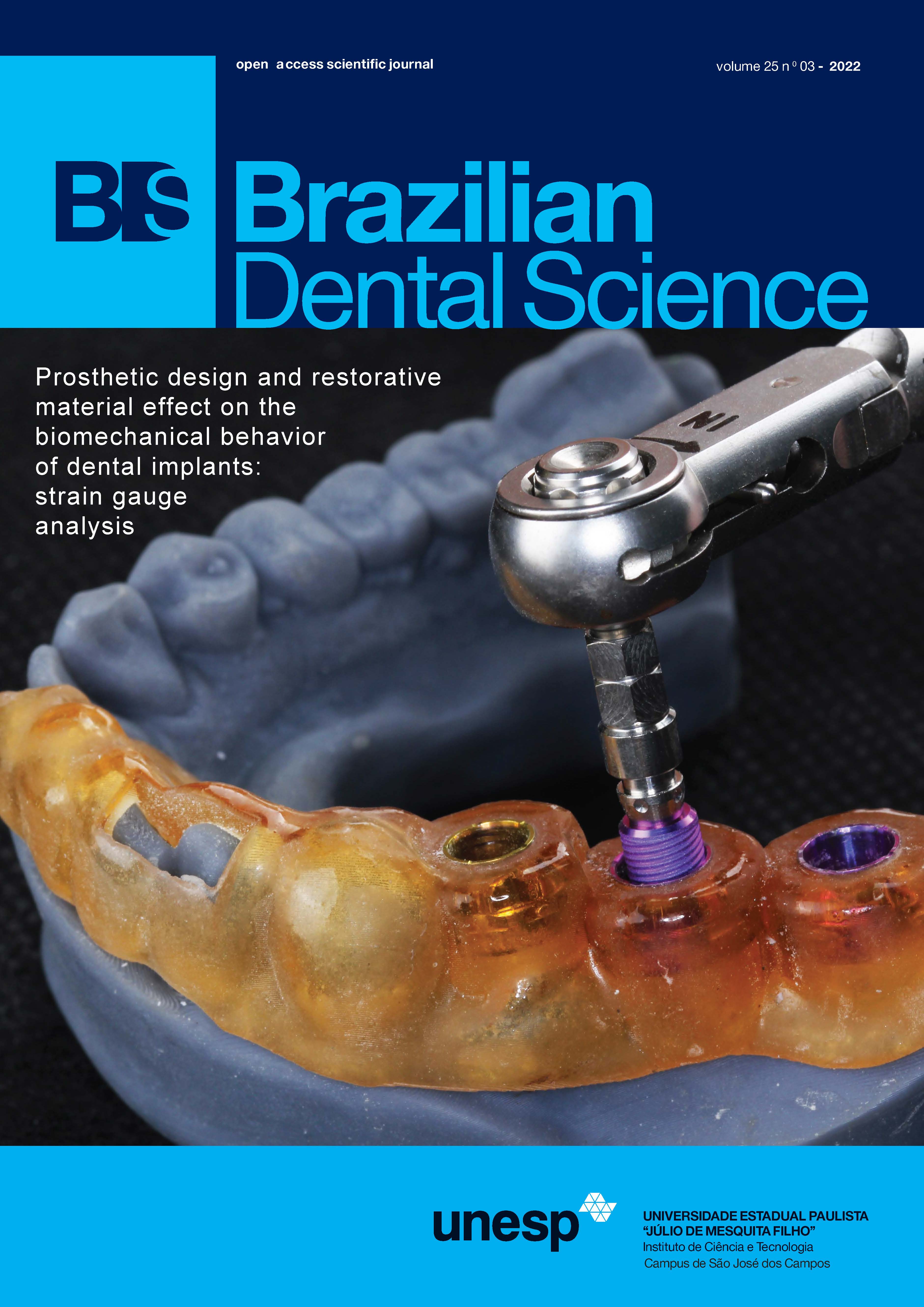Prosthetic design and restorative material effect on the biomechanical behavior of dental implants: strain gauge analysis
DOI:
https://doi.org/10.4322/bds.2022.e3380Abstract
Objective: The purpose of this in vitro study was to evaluate the effect of different implant prosthetic designs
with two restorative materials on biomechanical behaviour using strain gauge analysis. Material and Methods:
6 different screw-retained implant restorations were designed and fabricated using a CAD/CAM system. These
implants were divided into three main groups according to each design: group FB (fixed bridge); CB (cantilever
bridge); SC (separate crowns). Each group was divided into two subgroups according to their restorative
material: subgroup I – ultra translucent multi-layered zirconia (Kuraray Noritake Dental Inc, Japan); subgroup
II – a combination of PEEK framework (BioHPP, Bredent, GmbH & Co.KG, Germany) and zirconia crowns
(ultra-translucent multi-layered zirconia, Kuraray Noritake Dental Inc, Japan). Each subgroup was subjected to
a vertical load of 100 N and their biomechanical behaviour was evaluated using a strain gauge (Kyowa, Japan)
with a resistance of 120 ohms, length of 1 mm and width of 2.4 mm. For the implants, two strain gauges were
positioned buccally and lingually, parallel to the long axis of the implant. For the restoration, two strain gauges
were positioned buccally and lingually in the middle of it. The results were analyzed using three-way analysis
of variance (ANOVA), followed by serial two-way and one-way ANOVAs at each level of the study, followed by
Tukey’s post hoc test P-values were adjusted for multiple comparisons using BENFORRONI correction and the
significance level was set at P plus/minus 0.05 for all tests. Results: FB showed the lowest strain values out of all 3 design
groups. Moreover, the combination of PEEK and zirconia showed strain values smaller than full zirconia. The
highest mean strain value was recorded in CB at 299.50 while the lowest mean strain peak value was recorded in
group FB (74.50). The highest strain peak was recorded in CB subgroup I (3901.0 plus/minus 195.91) and the difference
had statistical significance (P-value < 0.01). Conclusion: the fixed bridge designed with PEEK framework and
zirconia crowns was found to be more favorable in restoring the posterior edentulous area regarding strain
measurements on the level of prosthetic components, implant and bone level.
KEYWORDS
Biomechanics; Dental implants; CAD/CAM; Dental prosthesis; Milling machines.
Downloads
Downloads
Published
How to Cite
Issue
Section
License
Brazilian Dental Science uses the Creative Commons (CC-BY 4.0) license, thus preserving the integrity of articles in an open access environment. The journal allows the author to retain publishing rights without restrictions.
=================




























